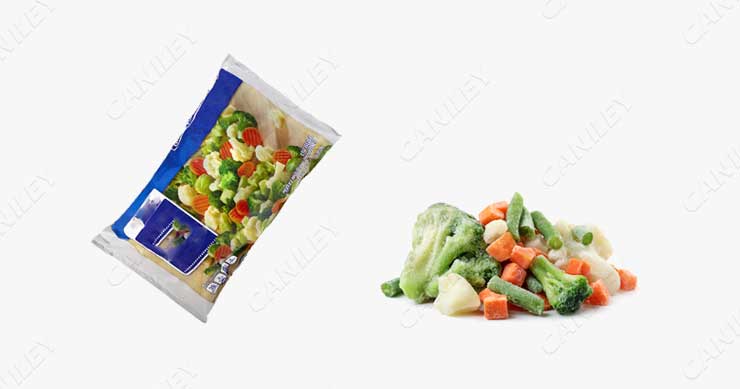In the fast-paced world we live in, frozen food has become a convenient and popular choice for consumers. Whether it’s frozen fruits and vegetables, ready-to-eat meals, or ice cream treats, the demand for frozen food products continues to grow. With this increasing demand comes the need for efficient and reliable packaging solutions. Packaging machines play a crucial role in the frozen food industry, ensuring that products are packaged safely, securely, and with optimal efficiency. In this article, we will explore packaging machine for frozen food products.

Packaging challenges in the frozen food industry
Packaging frozen food products presents unique challenges that must be addressed to maintain product quality and ensure consumer satisfaction. Some of the key challenges include:
Product preservation: Frozen food products require packaging that can withstand extreme temperatures and provide a barrier against moisture, air, and other contaminants to prevent freezer burn and maintain the product’s freshness.
Product protection: Frozen food products are susceptible to physical damage during handling, transportation, and storage. Packaging must be designed to protect the product from impacts, crushing, and punctures.
Efficiency and speed: With high production volumes, packaging machines need to operate at high speeds to meet demand, ensuring efficient and timely packaging processes.
Variety of packaging types: Frozen food products come in various packaging formats such as bags, pouches, trays, and cartons. Each packaging type requires a specialized packaging machine to meet specific requirements.
Specialized packaging machines for frozen food for different packaging types
Vertical form fill seal (VFFS) machines: VFFS machines are commonly used for packaging frozen food products in bags or pouches. These machines form a bag from a roll of film, fill it with the product, and then seal it. VFFS machines are versatile, efficient, and can handle a wide range of bag sizes, making them suitable for packaging frozen vegetables, fruits, and smaller frozen meals.
Horizontal form fill seal (HFFS) machines: HFFS machines are ideal for packaging frozen food products in trays or containers. These machines form a tray from a flat sheet of plastic, fill it with the product, and then seal it with a film or lid. HFFS machines are commonly used for packaging frozen entrees, desserts, and larger meal portions.
Vacuum packaging machines: Vacuum packaging machines are essential for preserving the quality of frozen food products. They remove air from the package, creating a vacuum and tightly sealing the product. Vacuum packaging helps prevent freezer burn, maintains product texture and flavor, and extends shelf life. These machines are commonly used for packaging frozen seafood, meats, and pre-cooked meals.
Cartoning machines: Cartoning machines are utilized for packaging frozen food products in cartons or boxes. These machines erect, fill, and close cartons, ensuring the proper alignment and secure closure of the packaging. Cartoning machines are commonly used for packaging frozen pizza, frozen treats, and bulk frozen food items.
Benefits of specialized packaging machines for frozen food
Improved product quality: Ensure that frozen food products are properly sealed and protected, maintaining their quality, flavor, and texture throughout their shelf life.
Enhanced efficiency and productivity: These machines are designed to operate at high speeds, improving packaging efficiency and increasing productivity. This helps meet consumer demand and reduces production costs.
Customization and flexibility: Can be customized to accommodate different packaging sizes, shapes, and materials, providing flexibility for manufacturers to adapt to changing market demands.
